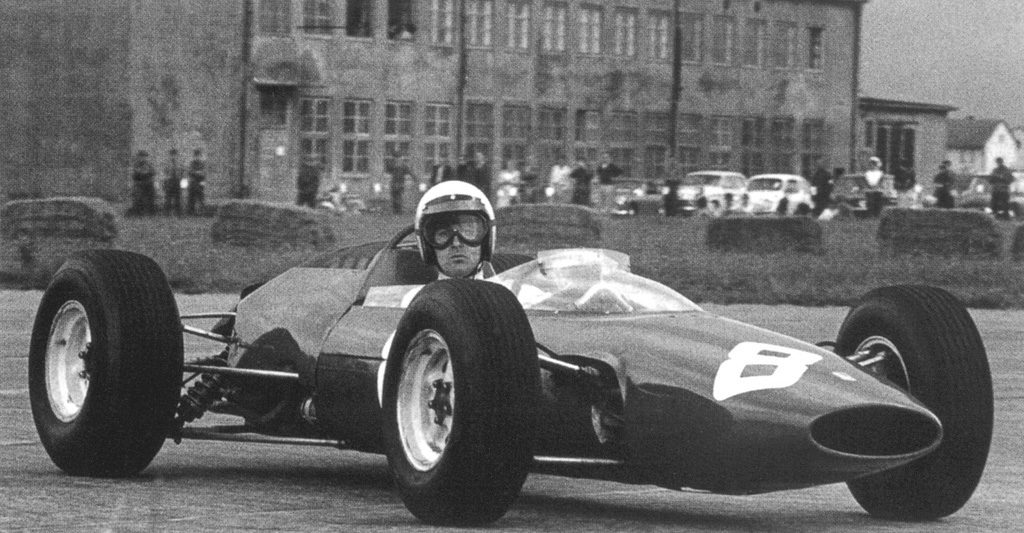
Eleven circuits have hosted only one Formula 1 Championship Grand Prix. We pick out five of these circuits with an interesting and unusual story to tell and examine why they never returned to the F1 calendar.
1957 – Pescara, Italy
- Where was it? Situated near Pescara, Italy, the triangular circuit, which passed through a number of villages in the surrounding area. At 25.8km long (16 miles), Pescara is the longest circuit to have held an F1 race in the modern era.
- What happened? The track had previously hosted non-championship rounds but as some drivers had never driven here before and didn’t have time to learn the circuit, some qualified 20 seconds faster than others. Stirling Moss won the event, finishing over three minutes ahead of Juan Manuel Fangio – he even had time to stop for a drink during the race!
- Why F1 never returned: The length of the track, paired with its narrow and bumpy nature, meant it was incredibly dangerous; so much so that Enzo Ferrari (who had previously won a Grand Prix here back in 1923) refused to send his cars to the event. The Pescara Grand Prix only ended up on the calendar as a result of the cancellations of the Belgian and Dutch Grands Prix and, despite attracting a healthy crowd of 200,000, F1 never returned to the track. Safety concerns eventually saw the circuit fall into disuse in 1961.
1958 – Ain-Diab Circuit, Morocco
- Where was it? This track was a road circuit, situated south west of Ain-Diab in Morocco.
- What happened? The Ain-Diab Circuit took six weeks to construct, and hosted a non-championship race in 1957, which was won by Jean Behra. The following season it gained a spot on the championship calendar, hosting the 1958 season finale. The race was won by Stirling Moss, but it was fellow-Brit Mike Hawthorn who claimed the championship.
- Why F1 never returned: The 1958 Moroccan Grand Prix was marred by tragedy after Stuart Lewis-Evans crashed and subsequently died of his injuries the following week. The crash was believed to have been caused by the incredibly dusty surface of the track, which caused Lewis-Evans’ engine to seize. Formula 1 has not raced in Morocco since.
1959 – AVUS, Germany
- Where was it? AVUS is probably one of the most unusual looking F1 tracks in history, being a motorway connected by two hairpin bends. One of the turns was named ‘the wall of death’ because it was banked at 43 degrees; quite a gradient, considering the banking at Indianapolis is only 11 degrees!
- What happened? The circuit hosted the 1959 German Grand Prix, which is the only F1 race in history to have been split into two heats. The result was decided on an aggregate of the two heats and the podium was made up of all Ferrari drivers.
- Why F1 never returned: The weekend was marred by the death of Jean Behra, who was due to compete in the Grand Prix but was killed in a support race. There was also a large accident for Hans Hermann, who miraculously escaped unharmed after being thrown from his somersaulting car. While F1 never returned, racing continued at the track into the late 1990s.
1959 – Monsanto, Portugal
- Where was it? The host of two previous non-championship races in 1954 and 1957, the Monsanto Park Circuit was situated near Lisbon, Portugal.
- What happened? The race held a championship event in 1959, with Stirling Moss – one of the few drivers to have driven the circuit before – taking victory. Strangely, the Grand Prix began at 5pm, in order to avoid the heat of the late summer sun. Moss crossed the finish line in the twilight, at around 7:15pm.
- Why F1 never returned: The circuit was pleasant enough, but somewhat of a logistical nightmare, making use of a usually busy highway. The surface of the track was also a major challenge for the drivers; even passing over tram lines! The event moved back to Circuito da Boavista for the following season, before finding a more permanent home at the Estoril circuit in the 80s and 90s.
1964 – Zeltweg, Austria
- Where was it? The Zeltweg Airfield is situated in the Styrian mountains. Following the success of fellow former airfield Silverstone, the decision was made to utilise Zeltweg as a racing circuit.
- What happened? The writing was on the wall for this track after a non-championship race in 1963. While the airfield was, in principle, a perfect place for a Grand Prix, the abrasive surface of the track was far from ideal and led to mechanical failures for many cars. F1 returned to Zeltweg for the first Austrian Grand Prix to count toward the World Championship in 1964, but the problem remained the same. The race marked Lorenzo Bandini’s only F1 win.
- Why F1 never returned: The track was too bumpy for F1 cars. The desire for an Austrian Grand Prix was still strong though, and the event moved a few kilometres up the road to the Österreichring when it returned to the calendar in 1969, which has been the only home of the Austrian Grand Prix ever since.
Header image: TheFerÖnline! (CC BY-SA 4.0, from Wikimedia Commons)



It would be interesting to have a GP of Morocco especially after ePrix hold a race in Marrakech maybe if Ain-Diab will be modernised to todays standards and requirements it will be great to hold a race there.
Morocco would be great. I travelled to Marrakesh last year for Formula E. Fascinating country!
https://gpdestinations.com/postcard-from-the-2019-marrakesh-e-prix/